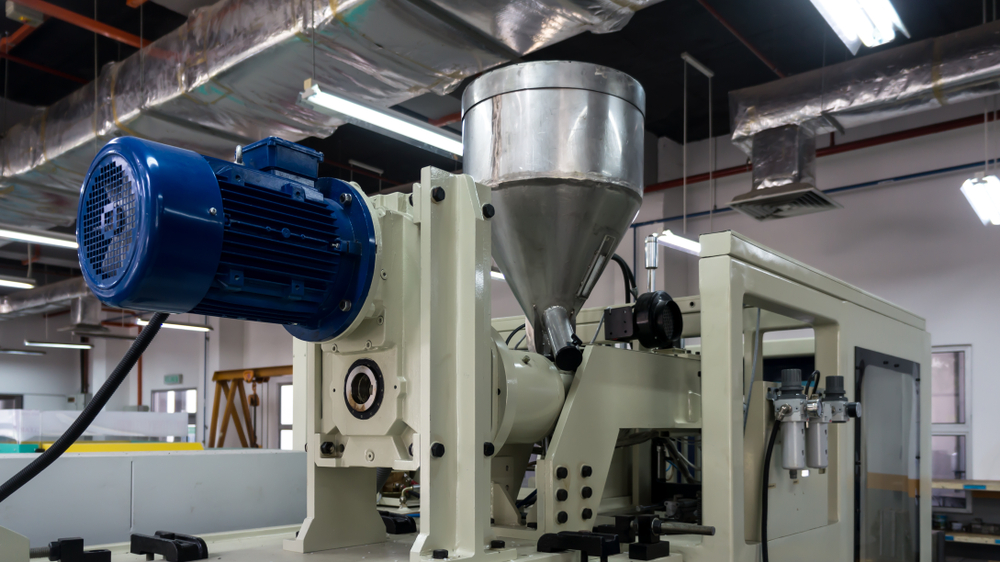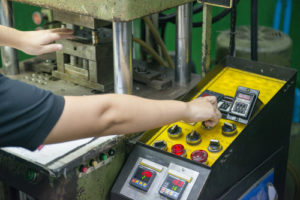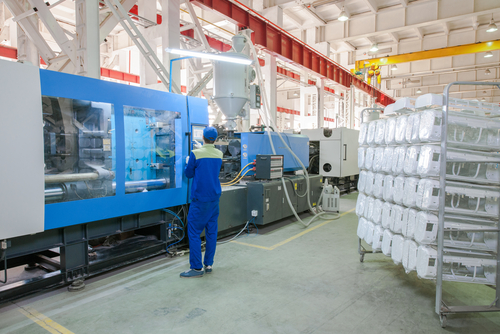
Automation has played a role in manufacturing for a long time, and it’s an area where continuing advances in technology mean a near-constant influx of new applications and ways to make the most out of the automation tools available. Injection molders, especially, have been the beneficiaries of some of the more recent advances in automation, which allow for reliable handling of the most delicate parts; increased integration of automation tools and robots into processes; and, most importantly, advances in safety that make it easier than ever for “collaborative robots” (cobots) to maximize the effectiveness and potential of their human counterparts in a shop.
How do injection molders use automation?
Automation has become a key tool for injection molders looking to maximize their capacity and productivity, while keeping overhead manageable. Price competition is fierce from facilities both abroad and at home. It’s also important for injection molders to maximize their margins while offering pricing that keeps them in the conversation among their customers and prospects. Automation has proven to be one of the most effective ways to do this.
Historically, automation has played a role in the most repetitive and rote portions of the injection molding process: removing ejected parts from the mold, picking and placing pieces on conveyor belts or other conduits to the next step in the process, and so on. These types of automation tools often must operate behind machine guards, as they aren’t safe for human machine operators to be near. This type of automation is extremely useful for speeding these repetitive processes (and, often, sparing the people who formerly filled these roles from repetitive-stress injuries, a serious problem in manufacturing). However, it operates in a silo — unable to be directly integrated with other processes.
placing pieces on conveyor belts or other conduits to the next step in the process, and so on. These types of automation tools often must operate behind machine guards, as they aren’t safe for human machine operators to be near. This type of automation is extremely useful for speeding these repetitive processes (and, often, sparing the people who formerly filled these roles from repetitive-stress injuries, a serious problem in manufacturing). However, it operates in a silo — unable to be directly integrated with other processes.
The most effective automation tools today have more safety features built in, and are much better able to be integrated into other processes on the shop floor — including those involving people. “Force-limited” cobots are designed to detect and immediately shut down upon any contact with a person (or, for example, a machine, preventing damage to both components). This integration allows for much more flexibility and innovation in the way these robots can be used — more of which we’ll cover in the next section.
How has automation directly improved the injection molding process? Automation has maximized efficiency and innovation in the injection molding process, among other benefits. With the much more safety-forward automation equipment now available — and becoming ever-more common — machines can essentially work right alongside people, in all manner of processes. Efficiency-maximizing workcells, for example, can now integrate more automation into relatively complex processes such as packaging and fulfillment. They complete all aspects of the process post-quality check — moving parts through to packaging, sealing and preparing for shipment, to moving pallets into a container.
Automation has also vastly improved repeatability in injection molding, leading to a marked improvement in quality. Whereas previously, automation was best-suited for “brute force” types of movement tasks, cobots and robotic arms are now suited to more fine-tuned processes, such as placing cores for overmolding; trimming runners with high precision and barely any evidence of a cut; or extracting delicate components from the mold without damage or marks.
Finally, automation has played a big role in improving the health and safety of  injection molding workers. As mentioned earlier, repetitive-stress injuries are a big risk to shop employees. In addition to the human toll, these types of injuries account for huge rates of sick time and lost productivity, and only get worse over time. With increased automation, injection molding workers are much better set up to finish their career in better health and able to fully enjoy their retirement.
injection molding workers. As mentioned earlier, repetitive-stress injuries are a big risk to shop employees. In addition to the human toll, these types of injuries account for huge rates of sick time and lost productivity, and only get worse over time. With increased automation, injection molding workers are much better set up to finish their career in better health and able to fully enjoy their retirement.
On the safety front, cobots and other automation tools are in a much better position to fulfill tasks that could previously leave workers prone to injury, even in the most safety-conscious shops. Injection molding is dangerous by nature, with high heat involved, lots of moving parts and tight quarters in which to conduct repairs or correct anomalies in equipment. As cobots, robotic arms and other automation devices are increasingly able to fulfill these tasks, human workers can stay out of harms’ way and do the actual hard work of programming machines and maximizing the efficiency of the automation resources available.
How will automation play a role in the future of injection molding? The future of injection molding belongs to automation just as much as it does to people. Neither are going anywhere in the ever-more competitive market. Components are needed for increasingly complex, high-precision parts. Injection molding continues to be the best way to produce many of those components, driving advances in consumer technology, medicine, defense equipment and beyond. The ability of an injection molding facility to meet requirements for those high-spec applications and industries will, in many cases, play a major role in their success or failure. In-house automation or contract manufacturers with extensive automation capabilities will be necessary tools for almost all manufacturers and entrepreneurs.
The employment landscape in injection molding can’t be overlooked as a factor in the importance of automation. Manufacturers continue to experience difficulties filling open positions. Injection molders are no exception. In an ideal world, the skills gap will be proactively addressed to fill those positions and provide more jobs, but it’s not an overnight process.
Those positions are open not because no one wants to fill them, but because they require years of training and experience. The opportunities in manufacturing have led to a resurgence in interest in the field among younger workers and students, but many don’t yet have the experience that shop owners want. In the meantime, automation is the most effective way for shop owners and managers to accommodate for those lost productivity hours. Cobots make it much easier to run three shifts. They also increase the overall capacity of the shop whenever they’re in operation. Moreover, increased automation means more potential for innovation, which will continue to make injection molding, and manufacturing in general, an attractive career target for the next generation to make an impact.


